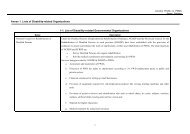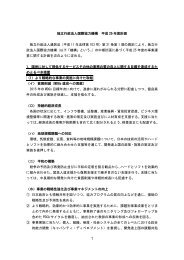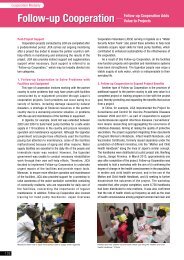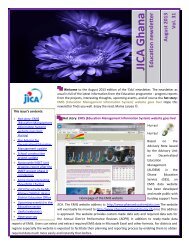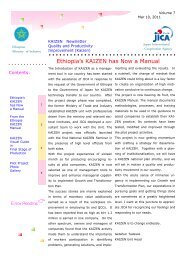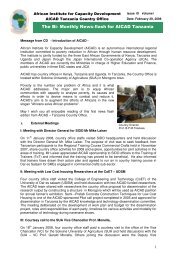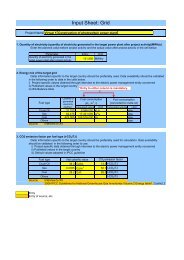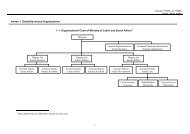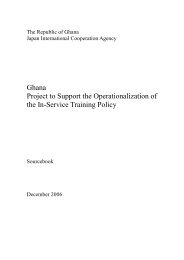FUNDAMENTAL OF NURSING PROCEDURE MANUAL for PCL ...
FUNDAMENTAL OF NURSING PROCEDURE MANUAL for PCL ...
FUNDAMENTAL OF NURSING PROCEDURE MANUAL for PCL ...
You also want an ePaper? Increase the reach of your titles
YUMPU automatically turns print PDFs into web optimized ePapers that Google loves.
48<br />
Fundamental of Nursing Procedure Manual<br />
Care Action Rationale<br />
9. (B)<br />
3) Close the screw clamp on the bulb and inflate the<br />
cuff to a pressure30 mmHg above the point<br />
where the pulse had disappeared<br />
4) Open the clamp and allow the aneroid dial to fall<br />
at rate of 2 to 3 mmHg per second.<br />
5) Note the point on the dial when first clear sound<br />
is heard. The sound will slowly increase in<br />
intensity.<br />
6) Continue deflating the cuff and note the point<br />
where the sound disappears. Listen <strong>for</strong> 10 to 20<br />
mmHg after the last sound.<br />
7) Release any remaining air quickly in the cuff and<br />
remove it.<br />
8) If you must recheck the reading <strong>for</strong> any reason,<br />
allow a 1 minute interval be<strong>for</strong>e taking blood<br />
pressure again.<br />
10. Assist the client to a com<strong>for</strong>table position.<br />
Advise the client of the reading.<br />
Ensure that the systolic reading is not<br />
underestimated.<br />
If deflation occurs too rapidly, reading may be<br />
inaccurate.<br />
This first sound heard represents the systolic<br />
pressure or the point where the heart is able to<br />
<strong>for</strong>ce blood into the brachial artery.<br />
This is the adult diastolic pressure. It represents<br />
the pressure that the artery walls exert on the<br />
blood at rest.<br />
Continuous cuff inflation causes arterial<br />
occlusion, resulting in numbness and tingling of<br />
client’s arm.<br />
The interval eases any venous congestion and<br />
provides <strong>for</strong> an accurate reading when you repeat<br />
the measurement.<br />
Indicate your interest in the client's well-being<br />
and allow him/her to participate in care.<br />
11. Wash your hands. Handwashing prevents the spread of infection.<br />
12. Record blood pressure on the client’s chart. Sign<br />
on the chart. Report any findings to senior staffs.<br />
13. Replace the instruments to proper place and<br />
discard.<br />
Fig. 35 Care Action 9. (A) 3) : Palpatory method<br />
Inflating the cuff while checking brachial artery<br />
Documentation provides ongoing data collection.<br />
Giving signature maintains professional<br />
acountability<br />
To prepare <strong>for</strong> the next procedure.<br />
Fig. 36 Care Action 9. (B) 2) :Auscultation<br />
Placing the diaphragm without touching the cuff



